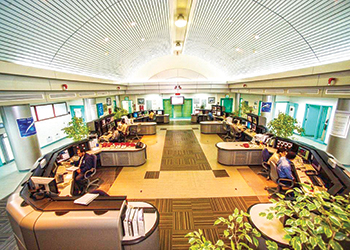
The MicroRAE in its standard four-gas configuration makes the unit suitable for a wide range of applications including oil and gas, wastewater treatment, manufacturing, utilities and telecommunications, firefighting and petrochemical/chemical industries
Honeywell, the leader in wirelessly connected safety solutions, has introduced the MicroRAE portable gas detector in the Middle East, the industry’s first wireless four-gas monitor that operates with all major wireless communications protocols — including Bluetooth, Mesh, GPS, and Wi-Fi.
The MicroRAE can also be paired with an intrinsically safe smart phone (available from Honeywell) to transmit gas readings for non-wireless users over a cellular network, the company says in a statement.
The MicroRAE simultaneously monitors hydrogen sulphide (H2S), carbon monoxide (CO), oxygen (O2) and combustible gases (LEL) in its standard four-gas configuration, and has a sensor configuration available for hydrogen cyanide (HCN) as well. This makes the unit suitable for a wide range of applications including oil and gas, wastewater treatment, manufacturing, utilities and telecommunications, firefighting, construction, petrochemical/chemical industries, as well as confined spaces and various industries with toxic and flammable gas hazards.
"Extending wireless gas monitoring capabilities to include the broadest range of communications platforms in a single device, will enable companies with wireless and non-wireless infrastructures, in a variety of industries, across the Middle East to reap the benefits of real-time monitoring and remote safety management," says Vincent Tessier, sales director for Honeywell in the Middle East and Africa.
For those that already have a Wi-Fi or mesh network, MicroRAE will extend their capabilities by ensuring continuous wireless coverage; for example, when a worker goes beyond the network range or otherwise can’t connect to the network, the worker’s smart phone will continue sending gas monitoring data, location and Man Down status to the real-time monitoring software, the statement said. And for customers that don’t have a wireless network, MicroRAE gives them a way to start experiencing the benefits of real-time, wireless gas monitoring without the cost and perceived complexity of setting up a network.
Real-time, wireless gas monitoring allows remote stakeholders to view critical information within seconds, from anywhere. This enables them to respond quickly to mitigate or prevent safety incidents and process malfunctions.
Practical applications extend to carrying out a man-down rescue or plant egress with greater confidence and better outcomes, or identifying equipment malfunction in its early stages so costly downtime can potentially be averted. Both the wireless and non-wireless versions of the detector are the first of many Honeywell products to feature Bluetooth Low Energy (BLE). BLE capabilities are enabled by apps on the intrinsically safe smartphone, the first of which is Honeywell’s Safety Communicator, which pushes gas readings, location and other data from the detector to its ProRAE Guardian software.










































































